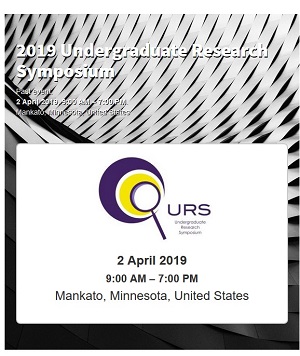The Effect of LH/FSH Injections on Steroid Hormone Production and Aggressive Behavior in Green Anole Lizards
Location
CSU Ballroom
Start Date
2-4-2019 10:00 AM
End Date
2-4-2019 11:30 AM
Student's Major
Biological Sciences
Student's College
Science, Engineering and Technology
Mentor's Name
Rachel Cohen
Mentor's Department
Biological Sciences
Mentor's College
Science, Engineering and Technology
Description
Infertility has become a growing concern for couples, with many of the issues rising from the improper function of the pituitary gland or hypothalamus. In order for sperm or eggs to be produced, the hypothalamus-pituitary-gonad (HPG) axis needs to be activated. The hypothalamus releases gonadotropin releasing hormone (GnRH) to the pituitary gland through the bloodstream. Then, the pituitary gland is activated and releases follicle stimulating hormone (FSH) and luteinizing hormone (LH), which stimulates the testes or ovaries. Green anole lizards (Anolis carolinensis) are seasonally breeding, such that they have high levels of steroid hormones, with high territorial and reproductive behaviors during the breeding season. During the non-breeding season, these lizards have very low levels of territorial and reproductive behaviors, with low steroid hormone levels. We hypothesized that if we activate the HPG axis, we should see an increase in steroid hormone levels and reproductive behavior in non-breeding lizards. We injected non-breeding males and females with saline, different doses of LH and/or FSH hormones. Plasma was collected to measure testosterone (T) or estradiol (E2) levels using enzyme-linked immunosorbent assays. Males injected with a higher dose of LH and FSH had increased T levels compared to other groups. There was no significant difference detected in E2 levels in females. We also expect to find a correlation between gonadal size, steroid hormone levels, and aggressive behavior in males. These results suggest that breeding hormone levels can be restored by HPG axis stimulation.
The Effect of LH/FSH Injections on Steroid Hormone Production and Aggressive Behavior in Green Anole Lizards
CSU Ballroom
Infertility has become a growing concern for couples, with many of the issues rising from the improper function of the pituitary gland or hypothalamus. In order for sperm or eggs to be produced, the hypothalamus-pituitary-gonad (HPG) axis needs to be activated. The hypothalamus releases gonadotropin releasing hormone (GnRH) to the pituitary gland through the bloodstream. Then, the pituitary gland is activated and releases follicle stimulating hormone (FSH) and luteinizing hormone (LH), which stimulates the testes or ovaries. Green anole lizards (Anolis carolinensis) are seasonally breeding, such that they have high levels of steroid hormones, with high territorial and reproductive behaviors during the breeding season. During the non-breeding season, these lizards have very low levels of territorial and reproductive behaviors, with low steroid hormone levels. We hypothesized that if we activate the HPG axis, we should see an increase in steroid hormone levels and reproductive behavior in non-breeding lizards. We injected non-breeding males and females with saline, different doses of LH and/or FSH hormones. Plasma was collected to measure testosterone (T) or estradiol (E2) levels using enzyme-linked immunosorbent assays. Males injected with a higher dose of LH and FSH had increased T levels compared to other groups. There was no significant difference detected in E2 levels in females. We also expect to find a correlation between gonadal size, steroid hormone levels, and aggressive behavior in males. These results suggest that breeding hormone levels can be restored by HPG axis stimulation.
Recommended Citation
Kenealy, Taylor. "The Effect of LH/FSH Injections on Steroid Hormone Production and Aggressive Behavior in Green Anole Lizards." Undergraduate Research Symposium, Mankato, MN, April 2, 2019.
https://cornerstone.lib.mnsu.edu/urs/2019/poster-session-A/30



